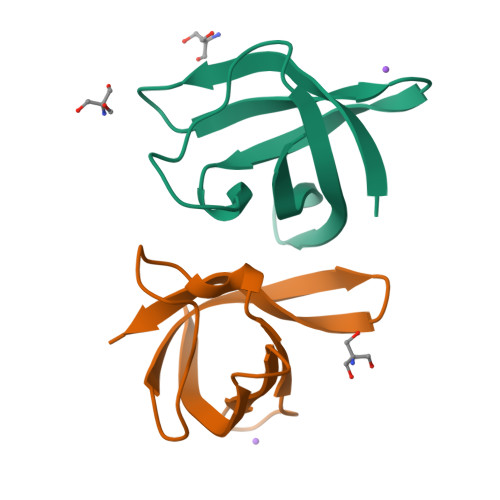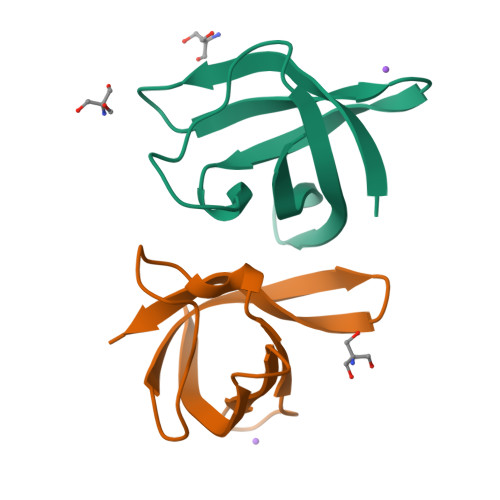Thermal stability and atomic-resolution crystal structure of the Bacillus caldolyticus cold shock protein.
Mueller, U., Perl, D., Schmid, F.X., Heinemann, U.(2000) J Mol Biology 297: 975-988
- PubMed: 10736231
- DOI: https://doi.org/10.1006/jmbi.2000.3602
- Primary Citation of Related Structures:
1C9O - PubMed Abstract:
The bacterial cold shock proteins are small compact beta-barrel proteins without disulfide bonds, cis-proline residues or tightly bound cofactors. Bc-Csp, the cold shock protein from the thermophile Bacillus caldolyticus shows a twofold increase in the free energy of stabilization relative to its homolog Bs-CspB from the mesophile Bacillus subtilis, although the two proteins differ by only 12 out of 67 amino acid residues. This pair of cold shock proteins thus represents a good system to study the atomic determinants of protein thermostability. Bs-CspB and Bc-Csp both unfold reversibly in cooperative transitions with T(M) values of 49.0 degrees C and 77.3 degrees C, respectively, at pH 7.0. Addition of 0.5 M salt stabilizes Bs-CspB but destabilizes Bc-Csp. To understand these differences at the structural level, the crystal structure of Bc-Csp was determined at 1.17 A resolution and refined to R=12.5% (R(free)=17.9%). The molecular structures of Bc-Csp and Bs-CspB are virtually identical in the central beta-sheet and in the binding region for nucleic acids. Significant differences are found in the distribution of surface charges including a sodium ion binding site present in Bc-Csp, which was not observed in the crystal structure of the Bs-CspB. Electrostatic interactions are overall favorable for Bc-Csp, but unfavorable for Bs-CspB. They provide the major source for the increased thermostability of Bc-Csp. This can be explained based on the atomic-resolution crystal structure of Bc-Csp. It identifies a number of potentially stabilizing ionic interactions including a cation-binding site and reveals significant changes in the electrostatic surface potential.
Organizational Affiliation:
Forschungsgruppe Kristallographie, Max-Delbrück-Centrum für Molekulare Medizin, Robert-Roessle-Str. 10, Berlin, D-13125, Germany.




















